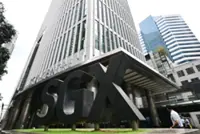
dc1e9015-f0d4-41db-be42-2c29dc963b50_8fe11f60
A Chinese chip expert praised China’s top NAND flash maker Yangtze Memory Technologies Co (YMTC) for its rival-beating innovation, but cautioned that the country needs to divert its focus to mature technology development after the US imposed sanctions on exports of leading edge semiconductor tech to China.
Since its founding in 2016, Wuhan-based YMTC has been China’s hope for breaking ground in the global market for NAND flash memory chips – a non-volatile semiconductor memory that retains data without power, which is pervasively used in smartphones, tablets and other consumer electronics devices.
Save 30% and win Bosch appliances! More Info











































